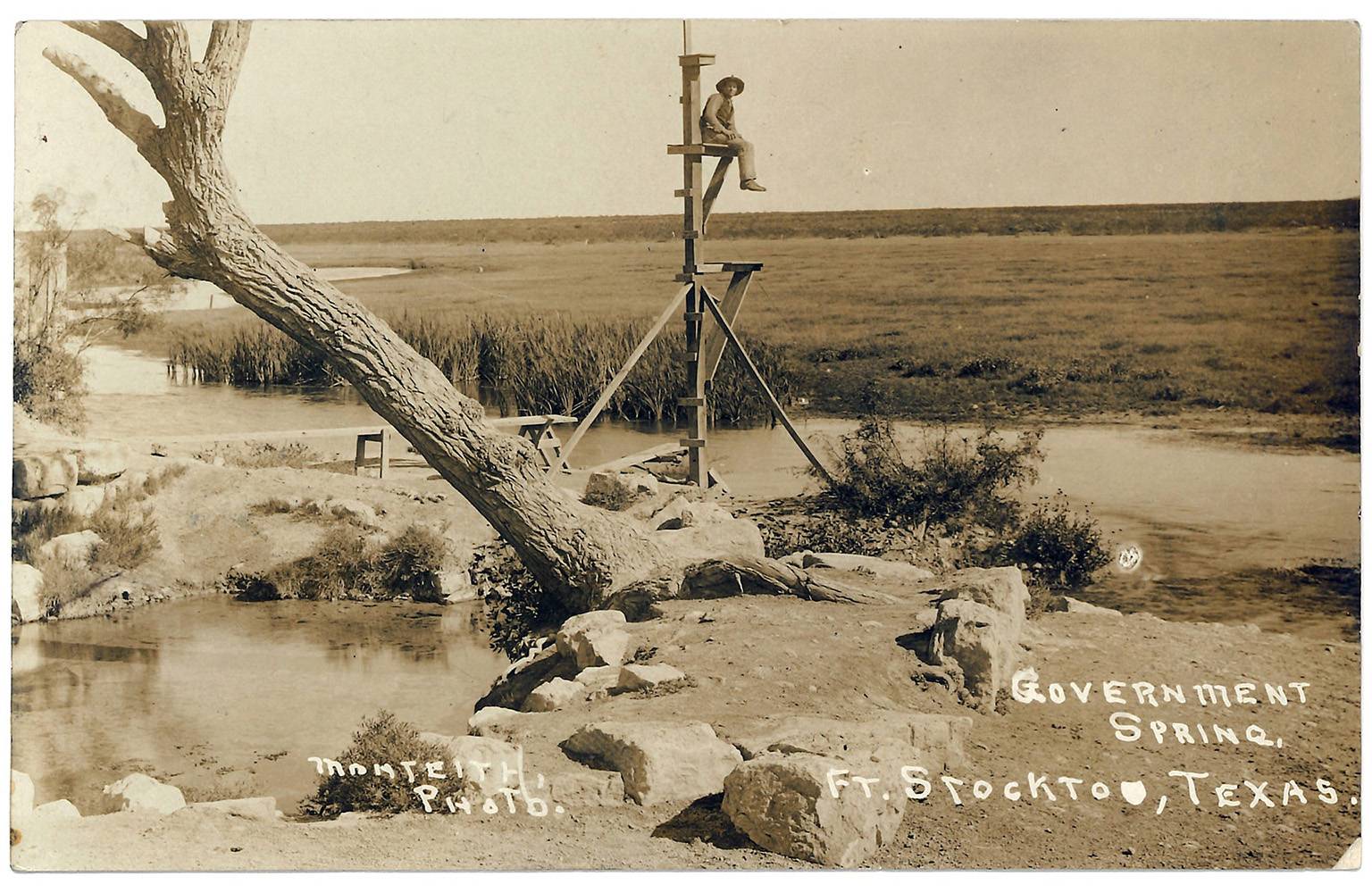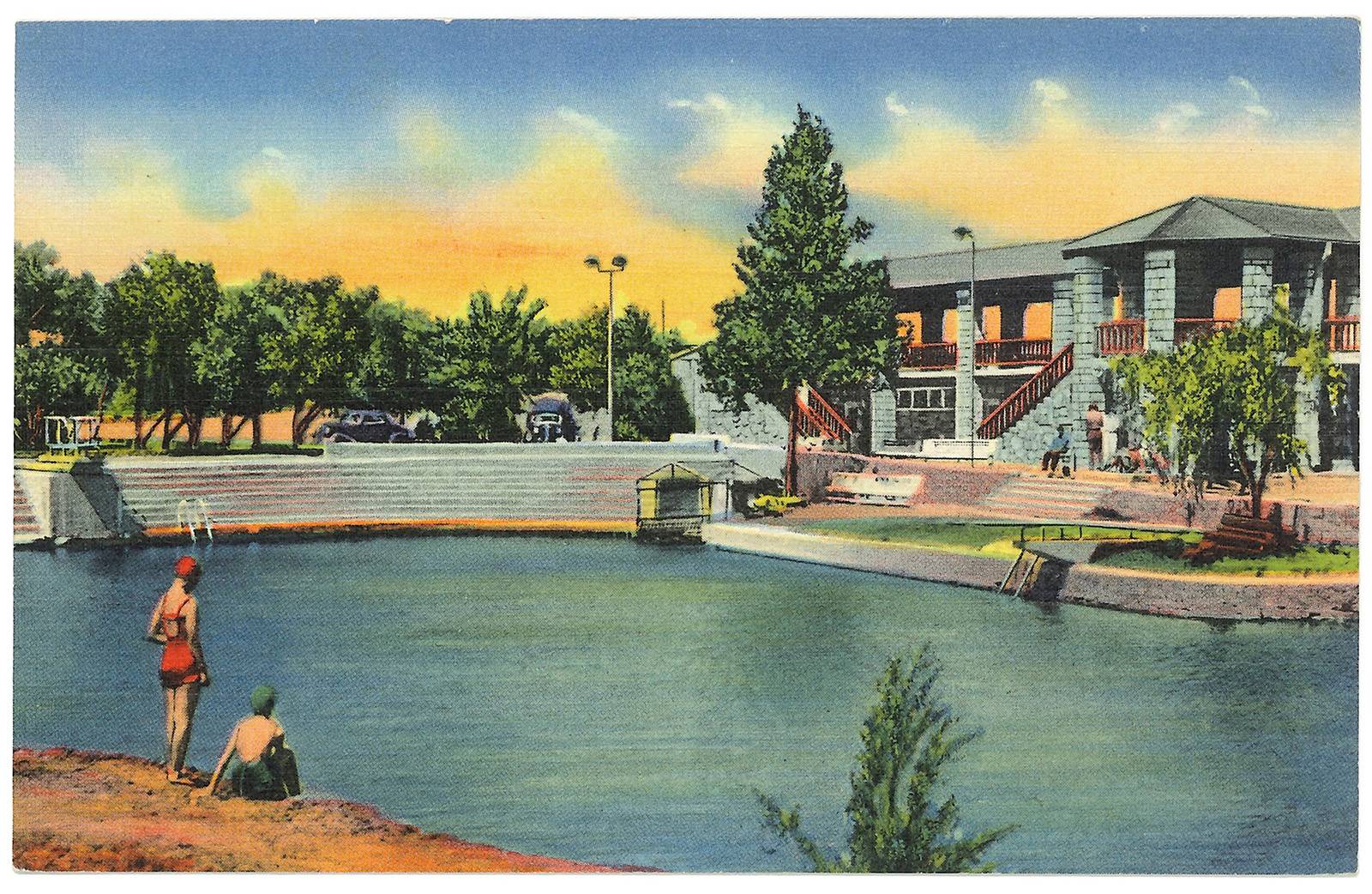Anna Huff | January 25, 2021

The Meadows Center for Water and the Environment at Texas State University and Texas Water Trade have released a new study that seeks to answer a significant question: What would it take to restore perpetual flow at Comanche Springs in Fort Stockton?
Once the sixth largest spring in Texas, Comanche Springs was, for centuries, a true water oasis and treasure. The springs, fed by the Edwards-Trinity Aquifer, provided a water supply to native populations, early settlers and downstream irrigators and supported a small but important desert ecosystem.
Yet, the springs were not immune to the effects of a growing state. Significant groundwater pumping upstream caused Comanche Springs to stop flowing reliably in the 1950s. Over the last decade, however, the once-quiet springs have begun flowing again in the late winter months, when the aquifer has rebounded from summer irrigation pumping, bringing with it hope for a new, flowing future.
While there have been a number of hydrogeologic studies on Comanche Springs over the past 70 years, none have fully assembled the history of the flow system nor have they evaluated the policy and economics behind bringing back year-round flow. Therefore, the Meadows Center and Texas Water Trade teamed up to develop the first roadmap to restoring spring flows, taking an in-depth look into the historical, hydrogeologic, policy and economics of Comanche Springs to determine what it would take for Fort Stockton to call itself Spring City once again.
“To bring back year-round flow, we focused on answering two key questions in this study: How much flow is needed from the springs and how much do we need to reduce pumping from the Edwards-Trinity Aquifer to achieve that flow?” said Robert Mace, executive director of the Meadows Center.
Based on results from surveys and flow data of nearby springs, the study estimates that the daily flow to Comanche Springs must remain above 10 cubic feet per second and have an average annual springflow of 20 cubic feet per second to meet health and human safety and species requirements. To achieve the recommended springflow, researchers determined that pumping should be between 26,000 to 35,000 acre-feet per year to meet a daily minimum flow of 10 cubic feet per second.

“We conducted a systematic analysis of historical estimates of pumping and springflows, which revealed that the current groundwater model overestimates pumping by about 50 percent, which means that it may be predicting more pumping than is possible to manage the aquifer sustainably,” Mace said. “Based on our findings, we recommend revising the model to reflect more accurate assessments of pumping and recharge.”
The researchers suggest using voluntary, market-based cooperation of groundwater owners in the Comanche Springs’ contributing and recharge zones as a viable path forward to reduce groundwater pumping in the Edwards-Trinity Aquifer and, therefore, restore perennial flows.
“Given the importance of agriculture to Fort Stockton and Pecos County, our goal for this project was to identify the optimal solution for restoring the spring while maintaining agricultural productivity – and doing so with the voluntary cooperation of local groundwater owners,” Sharlene Leurig, CEO of Texas Water Trade said. “We believe this market-based approach will offer win-win solutions for Fort Stockton’s economy and environment.”
While there is still more work and analyses to be done, the study recommends several hydrogeology, water market and policy strategies that can be achieved in the near-future to restore flow to Comanche Springs as well as funding sources to implement the strategies.
“Restoring springflow would help to sustain the natural ecosystem. It would also create new opportunities for recreation and tourism, which we estimate could amount to $4 million a year in new revenue to the Fort Stockton economy and 72 new, permanent jobs, serving as a model for using a market-based approach to protect springs and rivers across Texas,” Leurig said.
Next steps as a result of the study involve a multi-pronged approach, some of which are already in process. Texas Water Trade has raised almost $1.5 million in funds to establish a pilot market in Pecos County to incentivize on-farm water conservation. The Middle Pecos Groundwater Conservation District, the agency charged with managing and protecting groundwater in Pecos County, is currently improving the groundwater model. Recognizing the opportunity of a restored Comanche Springs, Congressman Will Hurd (TX-23) sent a letter to the Secretary of the Interior requesting the department’s technical and financial support for the spring’s restoration “at a scale proportionate to its economic and ecological value.”
The research was funded by the Fort Stockton Visitors Bureau, the National Fish and Wildlife Foundation and the Cynthia and George Mitchell Foundation.
Read the report online at https://bit.ly/3q7pcFc.
About The Meadows Center for Water and the Environment
The Meadows Center for Water and the Environment at Texas State University was named following a generous gift from The Meadows Foundation in August 2012. The Meadows Center inspires research, innovation and leadership that ensures clean, abundant water for the environment and all humanity.
About Texas Water Trade
Texas Water Trade is a nonprofit organization harnessing the power of markets and technological innovation to build a future of clean, flowing water for all Texans. We were founded in 2019 with catalytic support from the Harte Charitable Foundation. Our vision is durable, long-lasting water supplies in Texas that ensure future economic growth, ecological resilience and abundant drinking water for present and future
Share this article
For more information, contact University Communications:Jayme Blaschke, 512-245-2555 Sandy Pantlik, 512-245-2922 |
